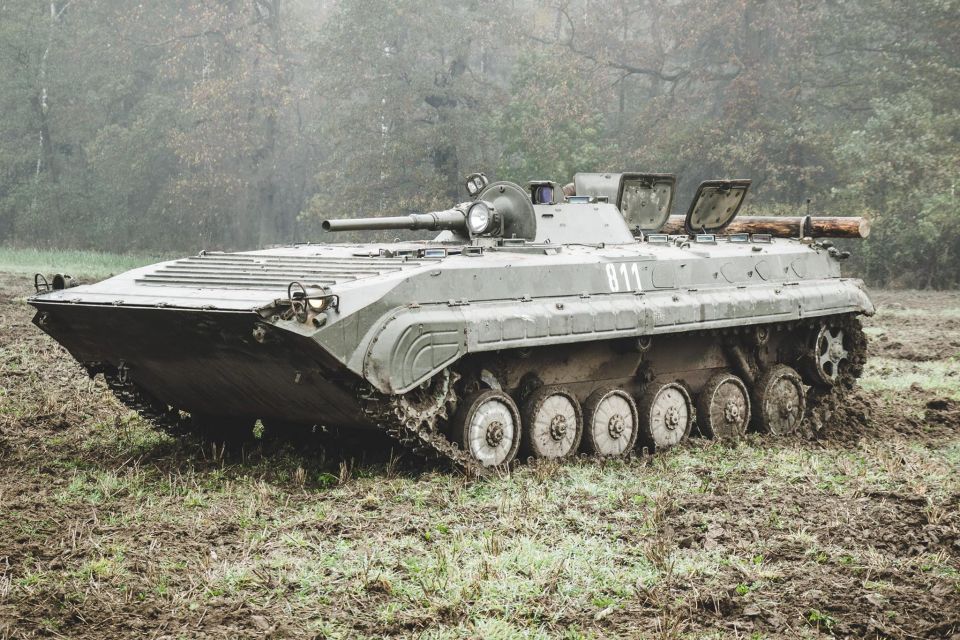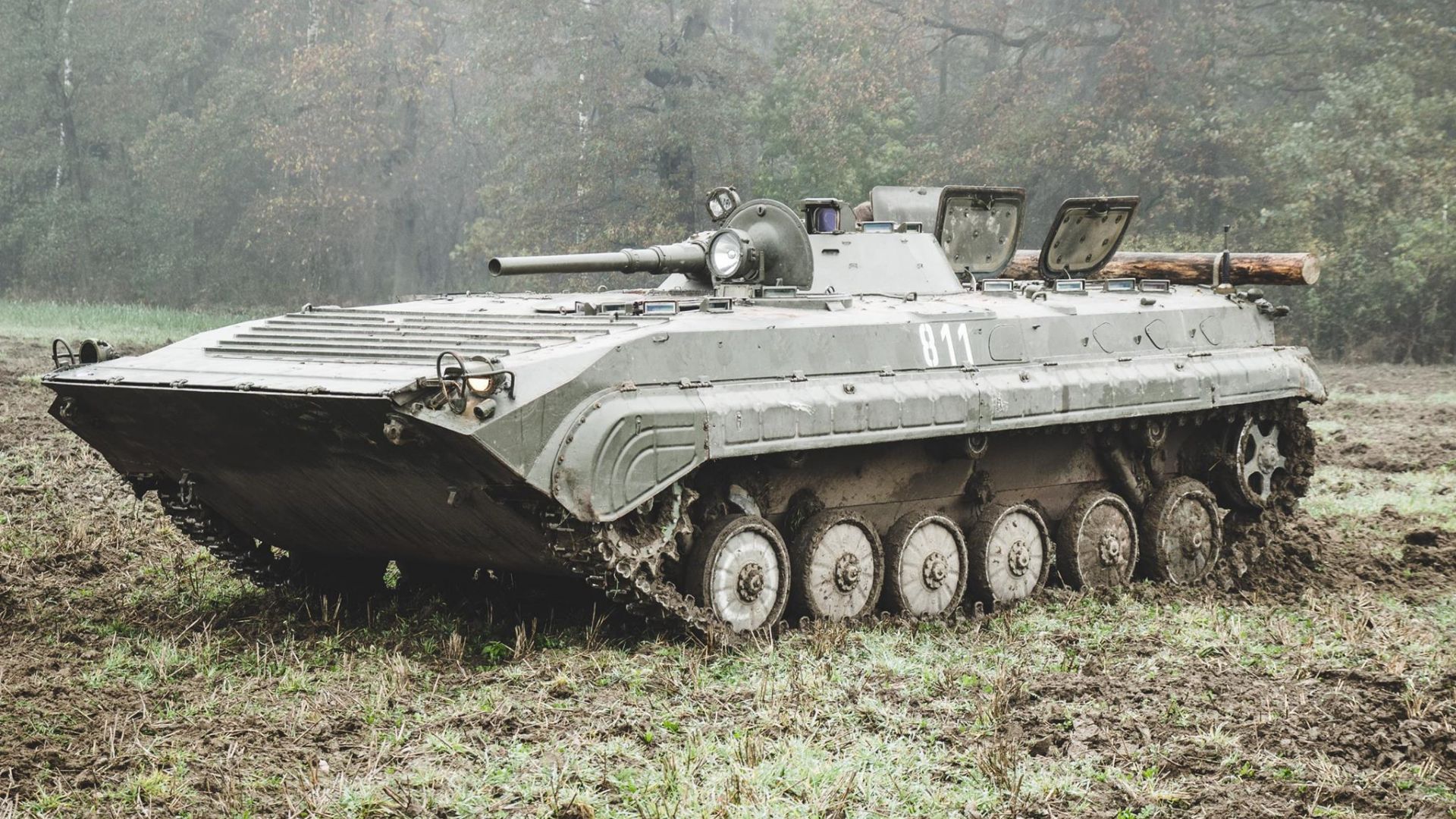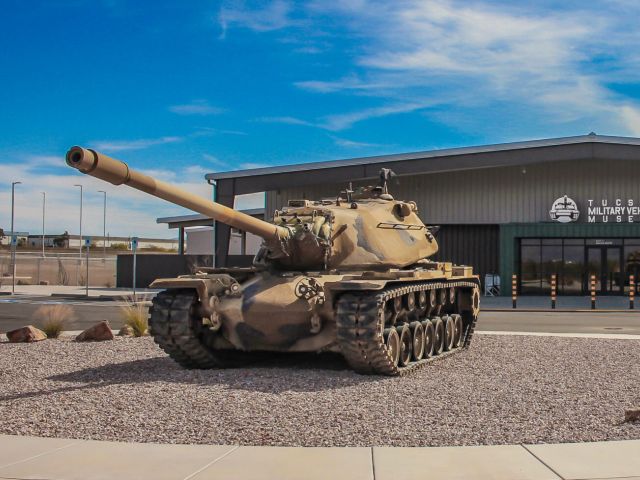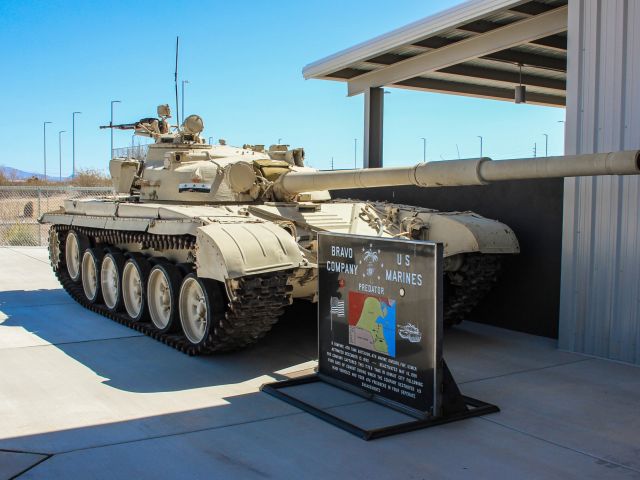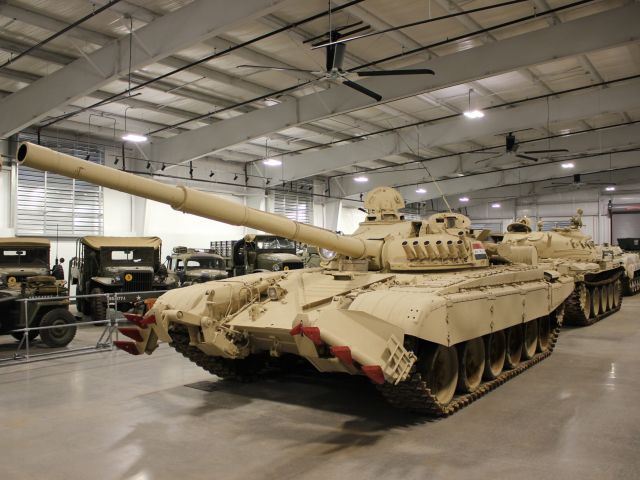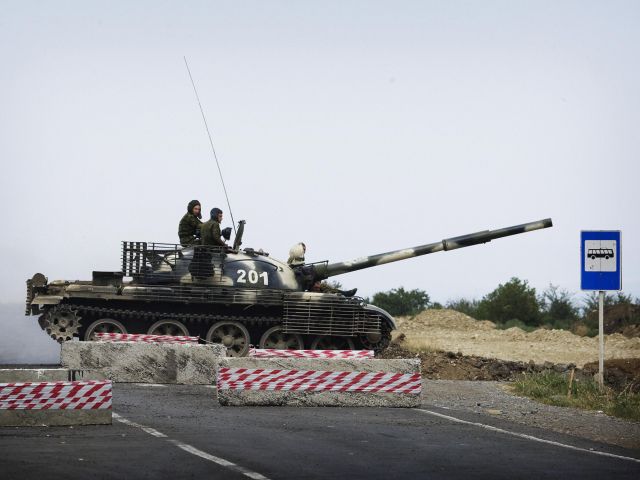Technical Specifications
-
Enter Service:1966
-
Crew:3 + 8 passengers
-
Weight:14.6 tons
-
Dimensions:Length: 22 ft 1.2 in, Width: 9 ft 8 in, Height: 6 ft 9.4 in
-
Armament:73 mm 2A28 Grom smoothbore gun (40 rounds), 9M14 Malyutka ATGM (4 rounds); Secondary Armament: 7.62 mm PKT coaxial machine gun (2,000 rounds)
-
Armor:6–33 mm welded rolled steel
-
Powerplant:UTD-20 V6 diesel engine, 300 hp
-
Performance:Speed: 40 mph (road), 28 mph (off-road); Range: 370 mi (road), 310 mi (off-road);
Description
The BMP-1 is a Soviet amphibious tracked infantry fighting vehicle that has been in service from 1966 to the present. The BMP-1 was the first mass-produced infantry fighting vehicle (IFV) of the Soviet Union. Soviet military leadership saw any future wars as being conducted with nuclear, chemical, and biological weapons. An innovative design, like the BMP, combined the properties of an armored personnel carrier (APC) and a light tank that would allow infantry to operate from the relative safety of its armored, radiation-shielded interior in contaminated areas.
The Red Army’s mechanized infantry tactics during the 1950s were similar to World War II methods, in which APCs were used as “battle taxis”. They would keep the infantry near the battle tanks during movement, but on enemy contact they would unload their infantry before retreating to safer areas. Existing APCs offered little or no protection from either nuclear or chemical weapons, as they were either open-topped or could not be sealed sufficiently. Additionally, the infantry had to disembark to be able to use their weapons.
The BMP-1 was first tested in combat in the 1973 Yom Kippur War, where it was used by Egyptian and Syrian forces. Based on lessons learned from this conflict, and early experiences in the Soviet Afghan War, a version with improved fighting qualities was developed, the BMP-2. It was accepted into service in August 1980. In 1987, the BMP-3, a radically redesigned vehicle with a completely new weapon, entered service in limited numbers with the Soviet Army. Presently, the BMP-1 is in active service with Russia, India, Poland, and the People’s Republic of China. Each account for over 1,000 vehicles.
